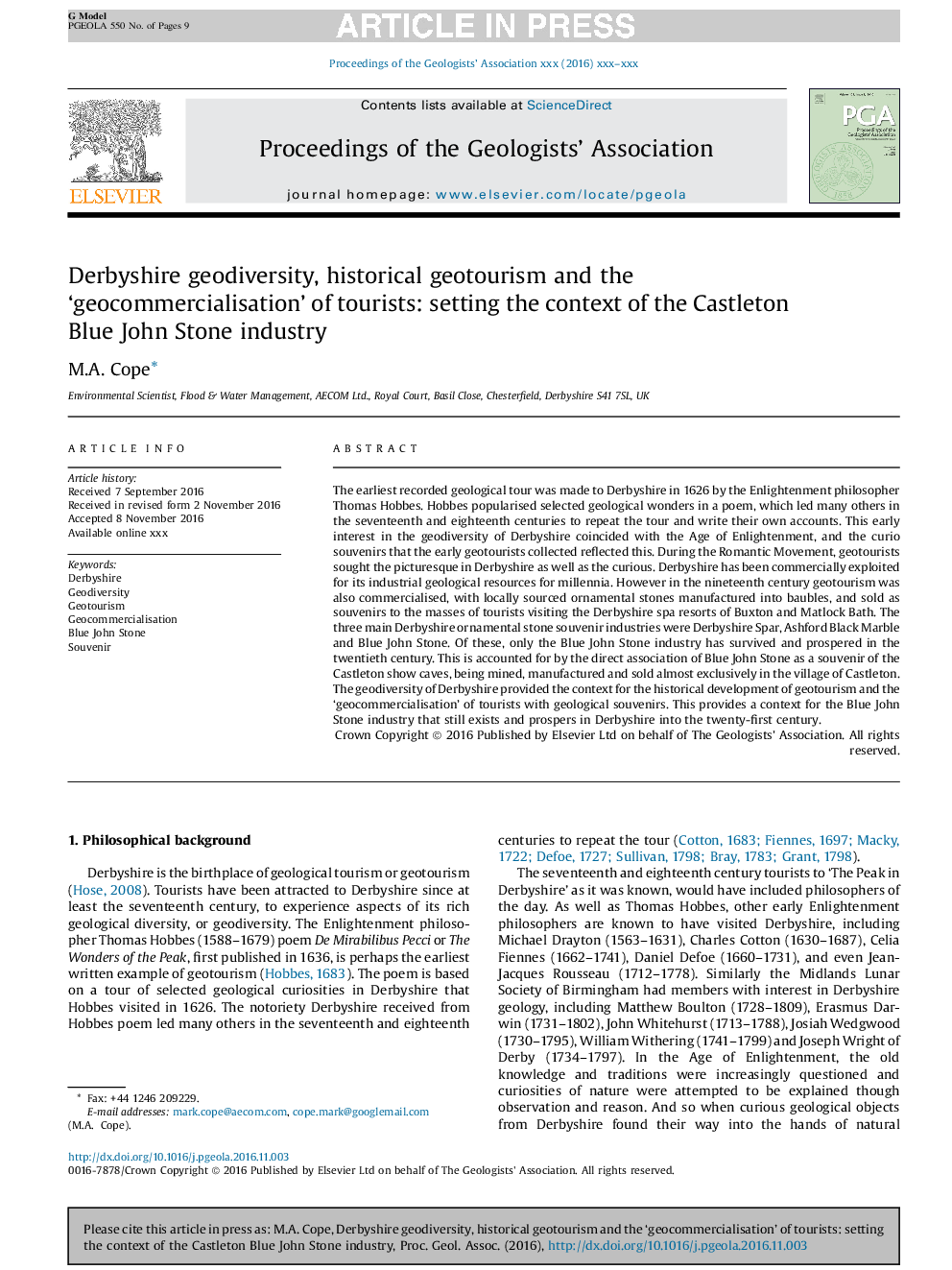| Article ID | Journal | Published Year | Pages | File Type |
|---|---|---|---|---|
| 5786460 | Proceedings of the Geologists' Association | 2016 | 9 Pages |
Abstract
The earliest recorded geological tour was made to Derbyshire in 1626 by the Enlightenment philosopher Thomas Hobbes. Hobbes popularised selected geological wonders in a poem, which led many others in the seventeenth and eighteenth centuries to repeat the tour and write their own accounts. This early interest in the geodiversity of Derbyshire coincided with the Age of Enlightenment, and the curio souvenirs that the early geotourists collected reflected this. During the Romantic Movement, geotourists sought the picturesque in Derbyshire as well as the curious. Derbyshire has been commercially exploited for its industrial geological resources for millennia. However in the nineteenth century geotourism was also commercialised, with locally sourced ornamental stones manufactured into baubles, and sold as souvenirs to the masses of tourists visiting the Derbyshire spa resorts of Buxton and Matlock Bath. The three main Derbyshire ornamental stone souvenir industries were Derbyshire Spar, Ashford Black Marble and Blue John Stone. Of these, only the Blue John Stone industry has survived and prospered in the twentieth century. This is accounted for by the direct association of Blue John Stone as a souvenir of the Castleton show caves, being mined, manufactured and sold almost exclusively in the village of Castleton. The geodiversity of Derbyshire provided the context for the historical development of geotourism and the 'geocommercialisation' of tourists with geological souvenirs. This provides a context for the Blue John Stone industry that still exists and prospers in Derbyshire into the twenty-first century.
Related Topics
Physical Sciences and Engineering
Earth and Planetary Sciences
Geology
Authors
M.A. Cope,
